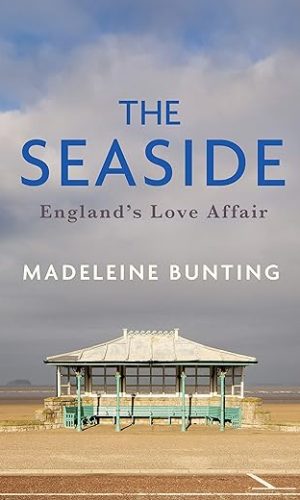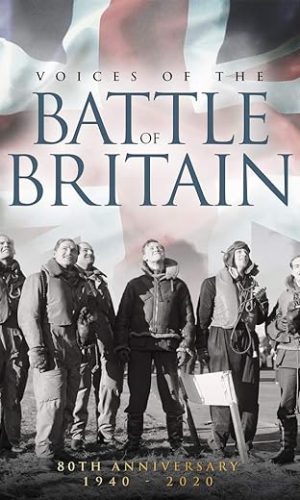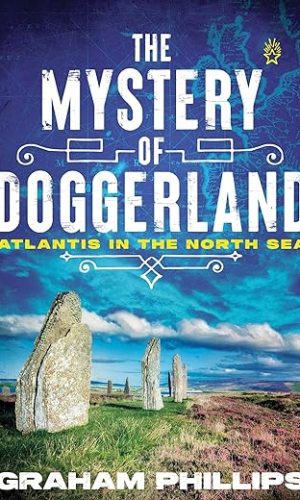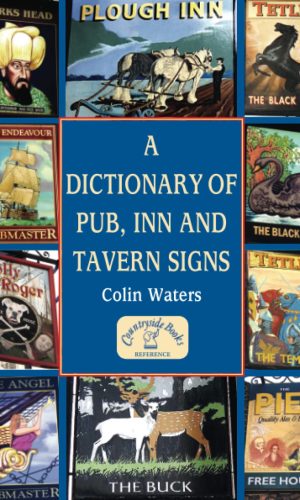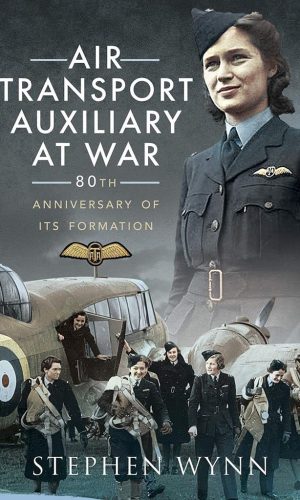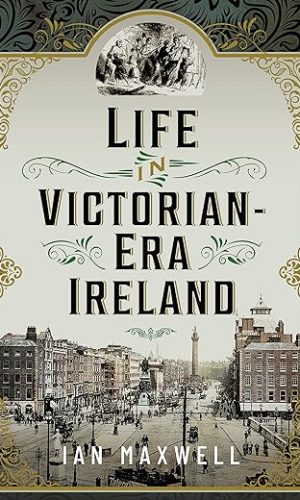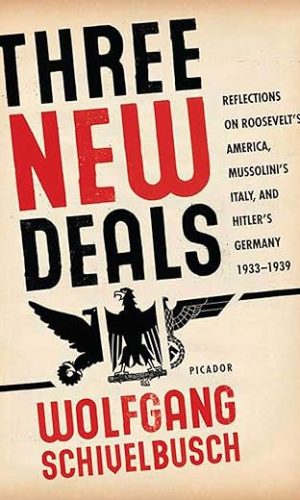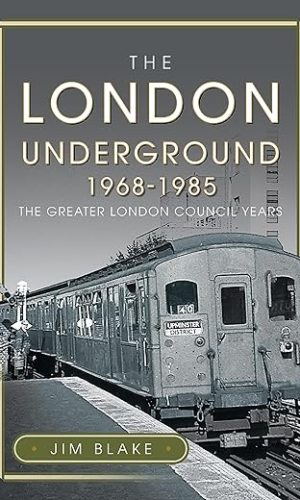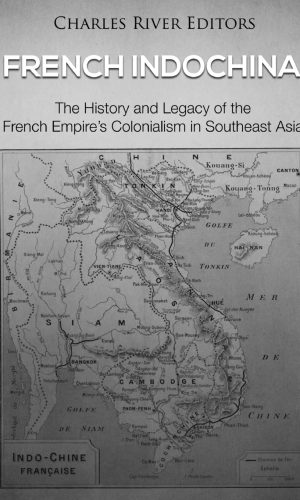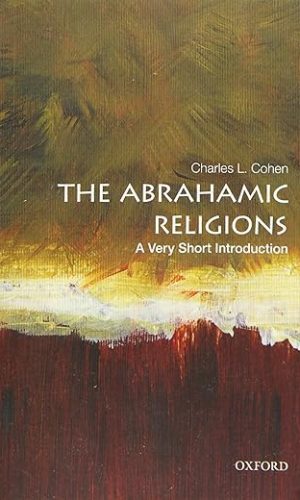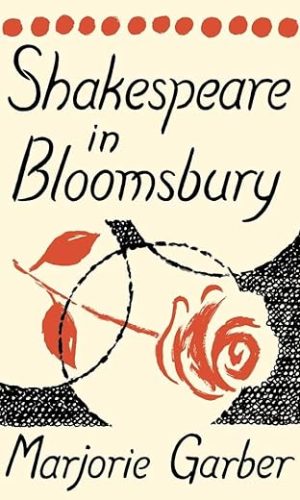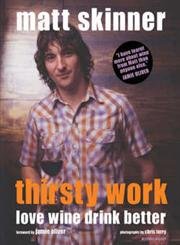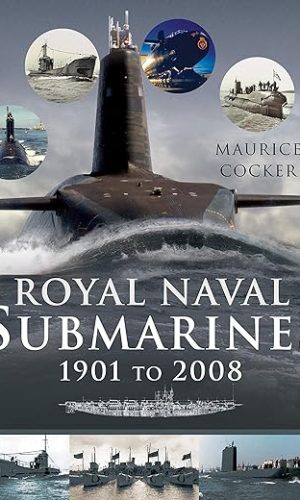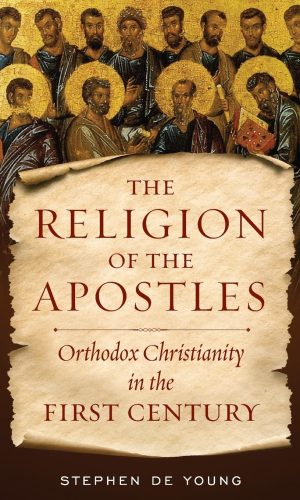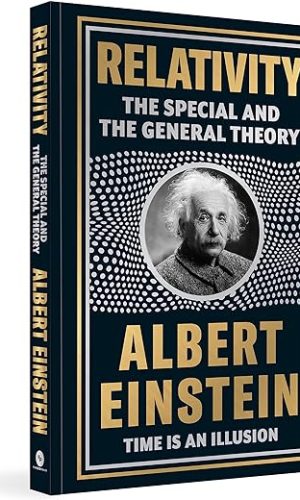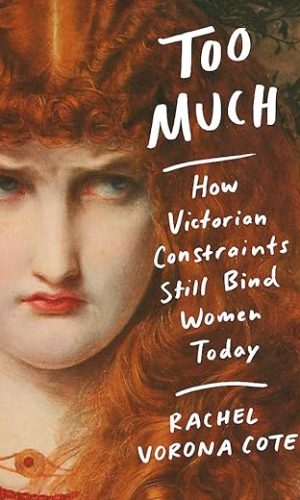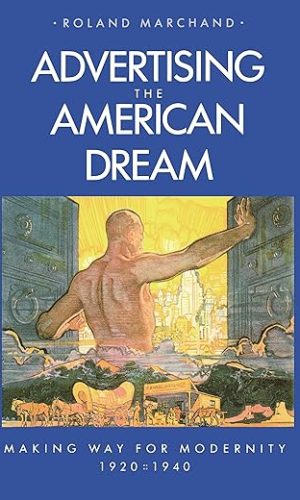-
New GCSE History Edexcel Revision Guide (with Online Edition, Quizzes & Knowledge Organisers): for the 2024 and 2025 exams (CGP Edexcel GCSE History)
We’ve got GCSE Edexcel History covered! This superb Revision Guide clearly explains the most popular Depth Study, Period Study and Thematic Study options, drawn from a range of historical eras in Britain, Europe and the wider world. Perfect for helping students develop their knowledge and understanding of history. There’s also plenty of top advice on the skills needed for each section of the exam, as well as knowledge organisers and online quizzes to help students test their knowledge of different topics. We’ve even thrown in a free online edition of the whole book – don’t say we never spoil you! The topics covered in this Revision Guide are: – Medicine in Britain c. 1250-present – The British Sector of the Western Front 1914-1918 – The American West c. 1835-c.1895 – The Cold War 1941-1991 – Early Elizabethan England 1558-1588 – Weimar and Nazi Germany 1918-1936Read more
£7.10 -
The Seaside: England’s Love Affair
“…a fascinating barometer of the state of the nation right now, in the wake of austerity, Brexit and Covid.” – Travis Elborough
England’s seaside is made up of a striking variety of coastlines including cliffs, coves, pebbled shore, wide sandy beaches, salt marshes, and estuaries cutting deep inland. On these coastal edges England’s great holiday resorts grew up, developed in the early eighteenth century originally as spas for medicinal bathing but soon morphing into places of pleasure, entertainment, fantasy and adventure.
Acclaimed writer Madeleine Bunting journeyed clockwise around England from Scarborough to Blackpool to understand the enduring appeal of seaside towns, and what has happened to the golden sands, cold seas and donkey rides of childhood memory. Taking in some forty resorts, staying in hotels, caravans and holiday camps, she swims from their beaches and talks to their residents to delve into their landscapes, histories and contemporary plight.
Read more
£11.90£19.00The Seaside: England’s Love Affair
£11.90£19.00 -
Voices of The Battle of Britain 80th Anniversary 1940 – 2020
It was a crucial moment of WW2. 1940. The Royal Air Force, virtually alone, defended the skies of Britain against massed formations of German bombers. They put up such a ferocious defence that Hitler gave up ideas of invading Britain and turned his attention to an assault on the Soviet Union. Of those pilots who courageously flew their Spitfires and Hurricanes against the Luftwaffe barely a handful remain. However the authors have interviewed no less than eighteen survivors and it is their memories and anecdotes that make this book unique. Highly illustrated throughout with rarely seen images, Voices of The Battle of Britain is packed with great stories of aerial combat and being shot down, of the classic fighters that they flew and fought in and against, of making and losing friends and colleagues; of a strained social life in the midst of battle; and, most of all, of standing steadfast in the face of overwhelming odds. It is coupled with an authoritative and lively narrative.Read more
£8.80£19.00 -
A History of Women in 101 Objects: A walk through female history
A WATERSTONES BEST BOOK OF 2023: POLITICS
This is a neglected history. Not a sweeping, definitive, exhaustive history of the world but something quieter, more intimate and particular. A single journey, picked out in 101 objects, through the fascinating, too-often-overlooked, manifold histories of women.
Open up this cabinet of curiosities and you’ll find objects that have been highly esteemed – even, like the Bayeux tapestry, fought over by nations – and others that are humble and domestic. Some (like a sixteenth century glass dildo) are objects of female pleasure, some (a thumbscrew) of female subjugation. There are artefacts of women celebrated by history and of women unfairly forgotten by it; examples of female rebellion and of self-revelation; objects that are inspiring, curious or (like radium-laced chocolate) just fundamentally ill-conceived.
Through the variety and nuance in all these 101 objects, Annabelle Hirsch has created a new history – teeming, unexpected, witty and always illuminating. This overdue corrective reveals what a healed femur says about civilisation, what men have to fear from hat pins, and it shows that the past has always been as complicated and fascinating as the women that peopled it.
Read more
£18.20£23.80 -
Fear: An Alternative History of the World
It’s been said that, after 9/11, the 2008 financial crash and the Covid-19 pandemic, we’re a more fearful society than ever before. Yet fear, and the panic it produces, have long been driving forces – perhaps the driving force – of world history: fear of God, of famine, war, disease, poverty, and other people. In Fear: An Alternative History of the World, Robert Peckham considers the impact of fear in history, as both a coercive tool of power and as a catalyst for social change.
Beginning with the Black Death in the fourteenth century, Peckham traces a shadow history of fear. He takes us through the French Revolution and the social movements of the nineteenth century to modern market crashes, Cold War paranoia and the AIDS pandemic, into a digital culture increasingly marked by uniquely twenty-first-century fears.
What did fear mean to us in the past, and how can a better understanding of it equip us to face the future? As Peckham demonstrates, fear can challenge as well as cement authority. Some crises have destroyed societies; others have been the making of them. Through the stories of the people and the moments that changed history, Fear: An Alternative History of the World reveals how fear and panic made us who we are.
Read more
£19.60£23.80Fear: An Alternative History of the World
£19.60£23.80 -
The Mystery of Doggerland: Atlantis in the North Sea
A scientific exploration of the advanced ancient civilization known as Doggerland or Fairland that disappeared 5,000 years ago.New marine archaeological evidence has revealed the remains of a large land mass to the north of Britain that hosted an advanced civilization 1,000 years before the recognized “first” civilizations of ancient Egypt, Mesopotamia, or India. Remembered in Celtic legends as Tu-lay, and referred to by geologists as Doggerland or Fairland, this civilization began at least as early as 4000 BC but was ultimately destroyed by rising sea levels, huge tsunamis, and a terrible viral epidemic released from melting permafrost during a cataclysmic period of global warming.
Exploring the latest archaeological findings and recent scientific analysis of Doggerland’s underwater remains, Graham Phillips shows that this ancient culture had sophisticated technology and advanced medical knowledge. He looks at evidence detected with remote sensing and seismic profiling of many artificial structures, complex settlements, gigantic earthworks, epic monoliths, and huge stone circles dated to more than 5,500 years ago, preserved beneath the ground and on the ocean floor. He examines evidence of Doggerland’s high-temperature technology, showing how its people were able to melt solid rock to create vitrified structures far stronger than concrete, a technique that modern science cannot replicate. He looks at the small part of the Fairland land mass that still exists: Fair Isle, a tiny island some 45 miles north of the Orkney Islands of Scotland. Phillips shows how, when Fairland sank beneath the waves around 3100 BC, its last survivors traveled by boat to settle in the British Isles, where they established the megalithic culture that built Stonehenge.
Revealing the vast archaeological evidence in support of the existence of Doggerland, as well as its threads of influence in early cultures around the world, Phillips also shows how the fate of this sophisticated ancient culture is a warning from history: the cataclysmic events that happened to the first civilizations could happen again as the world heats up.
Read more
£11.40£16.10The Mystery of Doggerland: Atlantis in the North Sea
£11.40£16.10 -
A Dictionary of Pub, Inn and Tavern Signs: An A-Z Reference Guide to Pub Names – Their meaning, origin and history
There are few things that symbolise British culture better than the good old-fashioned pub. Over centuries, their colourful hanging signs have become an integral part of the country’s backdrop. But how much do you really know about the names of these pubs, and how they came to have them?
Have you ever found yourself at the Red Lion, the Swan with Two Necks, the Jolly Roger, the Golden Fleece or the Beetle & Wedge, and stopped to wonder how it came by its name? Or what that name might reveal about the history of the building?
The answers to all these questions, and hundreds more, are contained with A Dictionary of Pub, Inn and Tavern Signs.
Here you’ll find out how public drinking houses have changed through history, progressing from the simple custom of hanging grapes outside to boards depicting a name and illustration; how, after the Norman Conquest, some inn-keepers found themselves obliged to display elements of their new lord’s coat of arms – a lion, griffin, deer or hart; how some pubs’ names (the Plough & Harrow or the Three Horseshoes, for example), came to represent the livelihoods of many of the inn’s customers.
This illustrated reference book, arranged alphabetically, provides a brief guide to the meaning, origin and history of these names and sheds light on an important part of Britain’s heritage.
Colin Waters is also the author of A Dictionary of Old Trades, Titles and Occupations and A Dictionary of Saints’ Days, Fasts, Feasts & Festivals.
Read more
£10.40 -
Air Transport Auxiliary at War: 80th Anniversary of its Formation
This book looks at the invaluable work carried out by members of the Air Transport Auxiliary during the course of the Second World War. Comprised of both men and women, it was a civilian organisation tasked with the collection and delivery of military aircraft from the factories to the RAF and Royal Navy stations. Men who undertook the role had to be exempt from having to undertake war time military service due to health or age, but other than that there were very few restrictions on who who could join, which accounted for one-legged, one-armed, one-eyed and short sighted pilots being accepted. Initially it was only men who were allowed to carry out this service, but by December 1939, British authorities were persuaded by Pauline Gower (the daughter of Sir Robert Vaughan Gower, a wartime Conservative MP, and an accomplished pilot in her own right), to establish a women’s section of the Air Transport Auxiliary, of which she was put in charge. The first eight women were accepted in to the service, but it would not be until 1943 that its male and female members received the same pay. By the end of the war 147 different types of aircraft had been flown by the men and women of the Air Transport Auxiliary, including Spitfire fighter aircraft and Lancaster bombers. These brave pilots were not just British, but came from 28 Commonwealth and neutral countries and their efforts sometimes came at a price: 174 Air Transport Auxiliary pilots, both men and women, died during the war whilst flying for the service.Read more
£11.60£14.20 -
Allied Fighter Aircraft 1939–45: American, British, French, Soviet, Dutch, Polish (Identification Guide)
Allied Fighters 1939–45 offers an highly-illustrated guide to Allied fighter aircraft that fought in Europe during World War II. Featuring all the main models flown by the Allied air forces from 1939 to 1945, the book offers a wealth of detail, including unit markings, organization, numbers of aircraft flown by campaign and exhaustive specifications for each model. The book is arranged first by country and then chronologically by campaign so that every aspect of the air war in Europe is covered. The guide features fighters from throughout World War II, including early models, such as the Morane Saulnier MS.406C.1, Hawker Hurricane Mk I and Fokker D XXI, and the most advanced fighters of the period, such as the Lavochkin La-7, P-51K Mustang and Gloster Meteor Mk I.The book also covers aircraft that were used for air-to-air combat (Supermarine Spitfire), ground attack (P-47 Thunderbolt), bomber escort (P-51B Mustang), night defence (Bristol Beaufighter) and photographic reconnaissance (P-38 Lightning). Packed with more than 200 profiles and dozens of archive photographs of every major Allied fighter aircraft, Allied Fighters 1939–45 is a core reference volume for modellers and World War II aviation enthusiasts.Read more
£15.60£19.00 -
Short History of War
A wonderfully engaging, accessible introduction to war, from ancient times to the present and into the futureThroughout history, warfare has transformed social, political, cultural, and religious aspects of our lives. We tell tales of wars—past, present, and future—to create and reinforce a common purpose.
In this engaging overview, Jeremy Black examines war as a global phenomenon, looking at the First and Second World Wars as well as those ranging from Han China and Assyria, Imperial Rome, and Napoleonic France to Vietnam and Afghanistan. Black explores too the significance of warfare more broadly and the ways in which cultural understandings of conflict have lasting consequences in societies across the world. Weaponry, Black argues, has had a fundamental impact on modes of war: it created war in the air and transformed it at sea. Today, as twentieth-century weapons are challenged by drones and robotics, Black examines what the future of warfare looks like.Read more
£7.60£14.20Short History of War
£7.60£14.20 -
World Religions: The Great Faiths Explored and Explained
An essential guide to learning everything you need to know about the history, central practices, and the key teachings of many religions.
A compelling and insightful guide for uncovering and understanding a variety of the world’s major religions. This book will be the perfect gift for thinkers, borrowers, and students of religious studies and philosophy.
Learn new and profound information about a variety of faiths. In this educational guide you’ll find:
– A chapter devoted to each of the major world religions – Hinduism, Buddhism, Judaism, Christianity, Jainism, Sikhism and Islam
– Lesser-known religions and belief systems are covered, offering a comprehensive overview of faith
– Detailed illustrations and annotated works of art, and a timeline of religious historyDiscover a variety of the world’s major religions and other faiths from both the ancient and the modern world through this insightful guide. Explore over 450 classic works of religious and devotional art. With sacred texts, epic imagery, key beliefs, and religious artefacts, this educational guide is perfect for libraries, classrooms, and the bookshelves of those who simply love learning.
Read more
£17.10£19.00 -
Life in Victorian Era Ireland
There are many books which tackle the political developments in Ireland during the nineteenth century. The aim of this book is to show what life was like during the reign of Queen Victoria for those who lived in the towns and countryside during a period of momentous change. It covers a period of sixty-four years (1837-1901) when the only thing that that connected its divergent decades and generations was the fact that the same head of state presided over them. It is a social history, in so far as politics can be divorced from everyday life in Ireland, examining, changes in law and order, government intervention in education and public health, the revolution in transport and the shattering impact of the Great Famine and subsequent eviction and emigration. The influence of religion was a constant factor during the period with the three major denominations, Roman Catholic, Anglican and Presbyterian, between them accounting for all but a very small proportion of the Irish population. Schools, hospitals, and other charitable institutions, orphan societies, voluntary organisation, hotels, and even public transport and sporting organisations were organised along denominational lines. On a lighter note, popular entertainment, superstitions, and marriage customs are explored through the eyes of the Victorians themselves during the last full century of British rule.Read more
£17.30£19.00Life in Victorian Era Ireland
£17.30£19.00 -
Three New Deals: Reflections on Roosevelt’s America, Mussolini’s Italy, and Hitler’s Germany, 1933-1939
FDR’s New Deal is today regarded as the democratic ideal, the positive American response to a crisis that forced Germany and Italy toward National Socialism and Fascism.Yet in the 1930s, these regimes were not considered entirely antithetical. In this groundbreaking work, Wolfgang Schivelbusch investigates the shared elements of these three new deals – focusing on their architecture and public works projects – to offer a new explanation for the popularity of Europe’s totalitarian systems. Writing with flair and concision, Schivelbusch casts a different light on the New Deal and puts forth a provocative explanation for the still-mysterious popularity of Europe’s most tyrannical regimes.Read more
£12.30 -
Regional Tramways – London Transport
The final volume in the Regional Tramways’ series focuses on the history of tram operation in the London area. Starting the story with the pioneering horse tramways operated by George Francis Train in the 1860s, the book narrates how the various horse, steam, cable and electric tramways evolved in the period leading up to the creation of the London Passenger Transport Board in 1933. The primary focus of the book is the period immediately after World War 2 when, following the retention of the tramways for longer than anticipated, the process of conversion – codenamed Operation Tramaway’ – saw almost 1,000 trams eliminated from the streets of London in less than two years. Also covered in the book are the two second-generation tramways – the Docklands Light Railway and Croydon Tramlink – which now serve parts of the Greater London area. The book concludes with an overview of those London trams that survive into preservation.Read more
£10.30£19.00Regional Tramways – London Transport
£10.30£19.00 -
The London Underground, 1968-1985: The Greater London Council Years
LONDON’S HISTORIC, iconic Underground railway system in the period from 1968 to 1985 was a very different place to what it is in the 2020s. Much of its rolling stock dated from before World War Two, and with the exception of the new Victoria Line and the isolated Woodford to Hainault shuttle, trains were all two-person operated as the 1970s dawned. Transport photographer Jim Blake recorded most of the system on film before it would change forever, concentrating on the older rolling stock as well as other items of interest due for replacement or modernisation, during this period when, regrettably, London Transport was often starved of much-needed funds by central government. The eminently sensible transfer of overall control of London’s buses and Underground system to the city-wide Greater London Council at the beginning of 1970 was snatched away by the Thatcher regime in 1984, after which things rapidly went downhill. This book covers the years of GLC control, including the months prior to their taking charge in order to set the scene. Many rare and unusual scenes are included in this volume, especially of the then still basically intact portion of the uncompleted Northern Line extension between Drayton Park and Highgate, which had been so close to completion when work was halted during the war, but then abandoned in the early 1950s, incurring much wasted work and expenditure. For anyone with a serious interest in London’s Underground, this book is essential reading, including as it does many pervious unpublished photographs.Read more
£20.00£23.80 -
French Indochina: The History and Legacy of the French Empire’s Colonialism in Southeast Asia
*Includes pictures
*Includes online resources and a bibliography for further reading
“Without Empire France today would only be a liberated country. Thanks to her Empire she is today a victorious country.” – French Guianan lawyer and politician, Gaston Monnerville
The U.S. Naval Station Argentia, located in Placentia Bay, a sheltered harbor on Newfoundland Island, was the unlikely setting for one of the most pivotal summit meetings of the 20th century. The meeting took place on August 9, 1941. World War II was in its second year, the British had won the Battle of Britain, but were still encircled by German U-Boats, and the British fleet was being decimated in the North Atlantic. In North Africa, a contest of armor was underway as Axis and Allied armies fought for control of Egypt, while Britain and her Commonwealth allies stood alone against the mighty German Wehrmacht.
Roosevelt, however, pictured a very different post-war world than his British counterpart, Winston Churchill. When he and Churchill met at what came to be known as the Atlantic Conference, Churchill’s pleas for U.S. manpower and aid were accepted, but only under clear conditions. If the United States was to come to the aid of Britain, it would be for the purpose of defeating the Germans and the Japanese and not to support the insupportable institutions of empire. Britain and, by extension, France and Portugal, the only remaining major European shareholders in foreign empire, would have to commit to decolonization as a basic prerequisite of substantial U.S. assistance.
Churchill, a vocal and forceful proponent of empire and a man of the generation that had conquered the world, did not receive this news well. On the other side of the world, British and allied European Asian colonies lay very much in the path of the Japanese imperial march into Southeast Asia. However, as the inevitability of war grew daily, the nationalist movement in India was also beginning to gather pace. Without India and Indian manpower, war with Japan would be lost before it could begin. The Indians in a sense could hold the British hostage, and ultimately, in exchange for Indian cooperation in the war, the British would first have to commit to a post-war independence process.
Meanwhile, the British were not the only European power to take note of this development. The French too were a major imperial power with a great deal to lose from such a monumental change, but their view of the global chessboard was somewhat different. France lay under German occupation, and an armistice had been signed on behalf of the French nation by Marshall Philippe Pétain, commencing the era of Vichy France. In London, meanwhile, the firebrand French General Charles de Gaulle urged a continuation of the resistance, believing the French mainland to be only a small part of the picture. France was much more than just France. De Gaulle established the Free French movement in Britain, based on the loyalty and the ongoing Free French control of a majority of her overseas territories. The Free French movement and the Free French army based themselves in Francophone Africa. The saga of the Free French movement would impact the war in both North Africa and Europe, but most specifically, it would serve to radically redefine the French view of itself and her relationship with her overseas territories. Most importantly, it would set the tone for a style of decolonization very different from the British, and perhaps not surprisingly, things would not go smoothly, especially with the geopolitics of the Cold War affecting matters.
French Indochina: The History and Legacy of the French Empire’s Colonialism in Southeast Asia analyzes the colonization of Southeast Asia and what happened as a result of the decolonization. Along with pictures of important people, places, and events, you will learn about the French in Southeast Asia like never before.Read more
£8.00 -
The Abrahamic Religions: A Very Short Introduction (Very Short Introductions)
In the book of Genesis, God bestows a new name upon Abram―Abraham, a father of many nations. With this name and his Covenant, Abraham would become the patriarch of three of the world’s major religions: Judaism, Christianity, and Islam. Connected by their mutual―if differentiated―veneration of the One God proclaimed by Abraham, these traditions share much beyond their origins in the ancient Israel of the Old Testament. This Very Short Introduction explores the intertwined histories of these monotheistic religions, from the emergence of Christianity and Islam to the violence of the Crusades and the cultural exchanges of al-Andalus.Each religion continues to be shaped by this history but has also reacted to the forces of modernity and politics. Movements such as the Reformation and that led by seventh-century Kharijites have emerged, intentioned to reform or restore traditional religious practice but quite different in their goals and effects. Relationships with states, among them Israel and Saudi Arabia, have also figured importantly in their development. The Abrahamic Religions: A Very Short Introduction brings these traditions together into a common narrative, lending much needed context to the story of Abraham and his descendants.
Read more
£7.10£8.50 -
The Israeli-Palestinian Conflict: A Beginner’s Guide to Objective Understanding Through a Fact-Based Journey From Past to Present
Are you seeking a clear, unbiased understanding of the Israeli-Palestinian conflict, but don’t know where to start?
Explore this comprehensive guide to embark on an enlightening journey from past to present.The Israeli-Palestinian conflict, an enduring issue that has spanned generations, remains unresolved, consistently capturing world attention and fueling passionate debates.
For many Westerners, this contentious topic feels distant, yet understanding its nuances is vital. Without comprehensive knowledge, it’s easy to fall prey to misinformation, perpetuate stereotypes, and engage in misinformed discussions.
This lack of clarity not only stifles constructive dialogues but also fans the flames of division.Imagine a scenario where the conflict intensifies, drawing the world into its vortex. As Israel’s staunch ally and an influential figure in Middle Eastern politics, the US stands on the brink of deeper involvement—posing risks to American resources and lives.
Daily, disturbing images from the conflict zone could permeate our screens, raising ethical questions about international responsibilities. Furthermore, this issue has the power to polarize, fracturing American communities and straining interpersonal relationships.
Highlights of this book include:
- A thorough history and analysis of the conflict, enabling readers to gain a well-rounded understanding and engage in enlightened conversations.
- Insightful exploration of the geopolitics and possible ramifications, offering guidance on supporting peaceful resolutions.
- Unveiling the humanitarian aspects, with balanced perspectives from both sides, suggesting avenues for the international community’s involvement in upholding human rights.
- A focus on fostering empathy and mutual respect, ensuring readers can navigate this sensitive topic without adding to the existing divisions.
- Exclusively in the paperback version, a bonus section delves into the intricacies of both Israeli and Palestinian intelligence operations, elucidating how these activities have at times facilitated, and at other times hindered, the path to peace.
- Enhanced with numerous detailed maps, this edition vividly illustrates the area’s present situation and key historical moments, enriching the reader’s visual understanding of the conflict.
To truly comprehend the Israeli-Palestinian conflict, equip yourself with unbiased, fact-based knowledge.
Acquire this essential guide to build an informed, objective opinion on one of the world’s most complex issues.
Read more
£11.40 -
Suburban London Cinemas
Among the 50 historic cinemas featured are the Finsbury Park Astoria, the Maida Vale Picture House, the Shepherds Bush Pavilion, the West Ealing Kinema, the Woolwich Granada and Kilburn’s Gaumont State. Illustrated with 100 images, this well-researched and informative volume will delight all those who have fond memories of visiting some of London’s long-since vanished cinemas, as well as those that still remain in some form or another.
Read more
£9.50£15.20Suburban London Cinemas
£9.50£15.20 -
Shakespeare in Bloomsbury
The untold story of Shakespeare’s profound influence on Virginia Woolf and the rest of the Bloomsbury Group
“A spirited dance of minds.”―Chris Vognar, Boston Globe
For the men and women of the Bloomsbury Group, Shakespeare was a constant presence and a creative benchmark. Not only the works they intended for publication―the novels, biographies, economic and political writings, stage designs and reviews―but also their diaries and correspondence, their gossip and small talk turned regularly on Shakespeare. They read his plays for pleasure in the evenings, and on sunny summer afternoons in the country. They went to the theater, discussed performances, and speculated about Shakespeare’s mind. As poet, as dramatist, as model and icon, as elusive “life,” Shakespeare haunted their imaginations and made his way, through phrase, allusion, and oblique reference, into their own lives and art.
This is a book about Shakespeare in Bloomsbury―about the role Shakespeare played in the lives of a charismatic and influential cast, including Virginia and Leonard Woolf, Vanessa Bell, Clive Bell, Roger Fry, Duncan Grant, Lytton Strachey, John Maynard Keynes and Lydia Lopokova Keynes, Desmond and Molly MacCarthy, and James and Alix Strachey. All are brought to sparkling life in Marjorie Garber’s intimate account of how Shakespeare provided them with a common language, a set of reference points, and a model for what they did not hesitate to call genius. Among these brilliant friends, Garber shows, Shakespeare was in effect another, if less fully acknowledged, member of the Bloomsbury Group.Read more
£20.00£25.00Shakespeare in Bloomsbury
£20.00£25.00 -
Slavery, Terrorism and Islam – The Historical Roots and Contemporary Threat
Dr. Peter Hammond’s bestselling book: SLAVERY, TERRORISM & ISLAM – The Historical Roots and Contemporary Threat is a fascinating, well illustrated and thoroughly documented response to the relentless anti-Christian propaganda that has been generated by Muslim and Marxist groups and by Hollywood film makers. As Karl Marx declared: “The first battlefield is the re-writing of History!” Slavery, Terrorism and Islam was first published in 2005 and quickly sold out. It earned Dr. Peter Hammond a death threat “Fatwa” from some Islamic radicals. We have included the story of that in an appendix of this book. Slavery, Terrorism & Islam sets the record straight with chapters on “Muhammad, the Caliphas and Jihad”, “The Oppression of Women in Islam”, “The Sources of Islam” and “Slavery the Rest of the Story”. With over 200 pictures, maps and charts, this book is richly illustrated. It consists of 16 chapters and 13 very helpful appendixes including demographic maps of the spread of Islam, a Glossary of Islamic Terms, a comparison of Muslim nations’ military spending vs. their national prosperity, a chart on how Jihad works depending on the percentage of Muslims in the population and guidelines for Muslim evangelism.Read more
£13.30 -
The Khmer Empire: The History and Legacy of One of Southeast Asia’s Most Influential Empires
*Includes pictures
*Includes contemporary accounts
*Includes online resources and a bibliography for further reading
The Khmer Empire, also known as the Angkor Empire, was a powerful empire of Southeast Asia that was established in 802 CE and ended in 1431 with the invasion of the Siamese and abandonment of Angkor. The Khmer Empire was responsible for many of the historic monuments and temples found throughout the jungles of modern-day Cambodia, and also in other countries of Southeast Asia, all made possible by the fact the Khmer Empire reached across modern-day Cambodia, parts of Thailand, Laos, and Vietnam, making it a strategic trading partner with ships traveling from China and India.
Of all the architecture, the empire is best known for constructing Angkor Wat, one of the modern world’s greatest wonders. Known in English as Angkor Wat (“City Temple”), the gigantic complex was built by King Suryavarman II in the early 12th century to serve as the king’s state temple and capital city. Since it has remained so finely preserved, it has maintained religious significance for nearly 900 years, first dedicated to the Hindu god Vishnu, and then Buddhist. Understandably, it has become one of Cambodia’s most potent symbols and tourist attractions, and it even appears on the Cambodian national flag. Angkor Wat continues to fascinate the world, both due to its sheer grandeur and size, as well as its ornamental decorations both inside and out. With political strife in Cambodia having cooled, Angkor Wat is now a major tourist attraction, bringing upwards of over half a million foreigners per year, which accounts for over half of the nation’s tourists.
As a result, the long-lasting influence that this empire had on the people of Cambodia can still be felt today, with Angkor Wat being featured on the national flag. The Khmer Empire: The History and Legacy of One of Southeast Asia’s Most Influential Empires chronicles the remarkable history of the Khmer and their impact on the region. Along with pictures depicting important people, places, and events, you will learn about the Khmer Empire like never before.Read more
£8.30 -
Thirsty Work: Matt Skinner
Serious but unpretentious, inspiring and fun, Thirsty Work celebrates wine and all that goes into making it and all who are involved in sharing it. Based on the way he teaches the subject of wine to his students at Fifteen, Matt Skinner breaks down all the information you need to feel confident when choosing and drinking wine. All the key topics in wine are covered – from how to taste to the key grapes; where and how wine is made to the range of styles – and his 24 “hour faces of wine” working around the clock, feature all the people who are involved in bringing wine to your table. In everyday terms, Skinner presents his subject on a unique and personal level.Read more
£0.50 -
Royal Mysteries of the Stuart and Georgian Periods
Both interesting and disturbing, learn all about the alleged attempt to murder James I and VI before the became King of England, the plots at court involving ‘poisoned tarts’, to the marriage court scandal of George III.‘There is nothing new under the sun’, a phrase ascribed originally to King Solomon, applies to the present book, with echoes of ‘modern’ themes exposing royal scandal, sex, corruption, political absolutism – attempted – religious controversy, danger of mass-terrorism, murder and ‘suspicious’ deaths, ‘fake news’ and international threat from superpowers. And all focusing on inside stories which today would be ‘investigative journalism’ with huge popular media interest. This is history for both specialists and, especially, for general readers, given media interest, including TV and film coverage in ‘exciting’ popular history, as set out by the author.
The earlier ‘Royal Mysteries’ in the series were full of tragedy, suffering, pathos, heroism and romance, but the present set are equally interesting and disturbing and revisionist. These include the alleged attempt to murder James I and VI before the became King of England; the scandal at court involving ‘poisoned tarts’, James’ ‘toy-boy’, and a subsequent murder trial. And the following questions and mysteries: did Charles II really promise to convert to Catholicism to please Louis XIV; did Charles marry his mistress Lucy Walter, mother of rebel Duke of Monmouth; was James II and VII an enlightened religious reformer or trying to convert England to Catholicism – the religion of European superpowers; did George I ‘disappear’ (a ‘hit’ in modern terms) his divorced wife’s lover before ascending the English throne; did the unpopular Duke of Cumberland murder his gay lover; did the hugely admired ‘respectable’ George III, devoted husband and father, marry a middle-class Quaker woman?
Read more
£9.50 -
Battleships of World War I & World War II: 1914-45 (Technical Guides)
For centuries, battleships provided overwhelming firepower at sea. They were not only a major instrument of warfare, but a visible emblem of a nation’s power, wealth and pride. The rise of the aircraft carrier following the Japanese aerial strike on Pearl Harbor in 1941 highlighted the vulnerabilities of the battleship, bringing about its demise as a dominant class of warship.
This book offers a detailed guide to the major types of battleships to fight in the two World Wars. Explore HMS Dreadnought, the first of a class of fast, big-gun battleships to be developed at the beginning of the 20th century; see the great capital ships that exchanged salvos at the battle of Jutland, including the German battlecruiser Derfflinger, which sank the British battleship Queen Mary; find out about the destruction of HMS Hood, which exploded after exchanging fire with the Bismarck, which itself was sunk after a trans-Atlantic chase by a combination of battery fire and aircraft-launched torpedoes; and be amazed at the ‘super-battleship’ Yamato, which despite its size and firepower, made minimal contribution to Japan’s war effort and was sunk by air attack during the defence of Okinawa.
Illustrated with more than 120 vivid artworks and photographs, Technical Guide: Battleships of World War I and World War II is an essential reference guide for modellers and naval warfare enthusiasts.Read more
£13.70£17.10 -
Modern South Asia: History, Culture, Political Economy
Jointly written by two leading Indian and Pakistani historians, Modern South Asia offers a rare depth of historical understanding of the politics, cultures and economies that shape the lives of more than a fifth of humanity. After sketching the pre-modern history of the sub-continent, the book concentrates on the last three centuries.
This new second edition has been updated throughout to take account of recent historical research. It includes an expanded section on post-independence with a completely new chapter on the period from 1991 to the present and a chapter on the last millennium in subcontinental history. There is a new chronology of key events.Read more
£26.30 -
A History of Central Asia (‘In Brief’ Books for Busy People)
For most of its history, Central Asia has been ruled by powerful dynasties, fallen under the vassalage of neighbouring empires or been invaded by foreign powers. Only the more remote, inaccessible tribal areas have maintained a degree of independence. However, since the fall of the Soviet Union in 1991, five distinct independent nation states have emerged that are now generally referred to as ‘Central Asia’, namely Uzbekistan, Tajikistan, Turkmenistan, Kazakhstan and Kyrgyzstan.
Regardless of who has been in power over the centuries, the one constant has been the significance of the land bridge that straddles the region connecting Europe and Asia, otherwise known as the Silk Road, or Roads. In ancient times, silks and spices travelled westwards, while furs, wools and precious metals took an eastward route. Consequently, those who controlled the trade-route accrued immense wealth and built great cities such as ancient Samarkand, Bukhara and Khiva.
The ancient Silk Road is now being revitalised. But rather than silks and spices, today the commodities being transported include natural gas, oil, minerals and communication systems.
This book tells the story of conquest and invasion, of empire building and colonialism. The earlier chapters include the great Persian/Iranian Empires, such as the Achaemenids, the Sassanids and the Safavids, as well as the exploits of Alexander the Great. Further chapters cover the Turkic migrations, arrival of Islam and the invasion of the Mongols. The final chapters tell of the conflict between the imperial powers of Russia and Britain, which was an event known as the Great Game. The 20th Century period of Soviet rule in Central Asia marks the final chapter and the book concludes with an Epilogue that brings the reader up to current events.
As with other books in the ‘In Brief’ series, this book is aimed at the general reader who wants to understand a particular historical topic but does not have the time or inclination to read a heavy academic tome. With this mind, footnotes have been omitted.While there will inevitably be gaps in a book of this size, the intention is to cover the most significant events that moulded Central Asia’s history. Should the reader be inspired to further reading on the subject, a small selection of the main works that have been consulted is provided at the end.
Read more
£5.10 -
Royal Naval Submarines 1901 to 2008
This is a must-buy for the Royal Navy and Submarine enthusiast, being a complete directory of RN submarines from the outset to the present day. There is a wealth of detail on each class. Every entry contains the specification, launch dates of individual boats, details of evolving construction and armament and other salient information in a compact form. The high quality of the drawings of the majority of classes adds to the value of this work which includes the very latest Astute submarines currently coming into service. This book is a complete directory of submarines and will be widely welcomed by all with an interest, professional or lay, in the subject.Read more
£11.60£14.20Royal Naval Submarines 1901 to 2008
£11.60£14.20 -
British Independent Buses in the 2000s
Roaring through the millennium into the twenty-first century we find the Transport Act 2000 that allows for increased cooperation between local authorities and operators, something that had not been allowed previously under competition legislation. Increasingly through the 2000s local authorities and county councils are taking responsibility for funding local bus services. The vehicles in use are changing as more and more operators invest in accessible buses. By the beginning of 2008, towards the end of the period covered by this book, 58 per cent of the UK bus fleet is low-floor. Again, we see the demise of some well-known operators, the takeover of some by the big bus groups, and, on the plus side, the rise in importance of others. Illustrated with previously unpublished images, this volume portrays the vehicles in use with independent companies through the first decade of the twenty-first century.Read more
£11.20£14.20British Independent Buses in the 2000s
£11.20£14.20 -
The Religion of the Apostles: Orthodox Christianity in the First Century
Father Stephen De Young, creator of the popular The Whole Counsel of God podcast and blog, traces the lineage of Orthodox Christianity back to the faith and witness of the apostles, which was rooted in a first-century Jewish worldview. The Religion of the Apostles presents the Orthodox Christian Church of today as a continuation of the religious life of the apostles, which in turn was a continuation of the life of the people of God since the beginning of creation.
Read more
£16.10£18.00 -
Relativity: The Special and the General Theory
Relativity: The Special and the General Theory is a groundbreaking scientific work written by Albert Einstein, one of the most renowned physicists of all time. Published in 1915, the book revolutionized our understanding of space, time, and gravity. Relativity remains a cornerstone of modern physics and a testament to Einstein’s intellectual brilliance.Provides a comprehensive exploration of both the special theory of relativity and the general theory of relativity. Concepts are explained in a logical and concise manner, enhancing the reader’s comprehension. Offers readers a fresh perspective on the fundamental principles that govern our reality. Delve into the mind of Einstein and understand the ideas that reshaped our understanding of the universe. Allows readers to engage with the timeless concepts that underpin our current scientific understanding.
Read more
£10.62 -
A History of War Surgery
Since antiquity, war surgery has been a profession demanding a special kind of human: one able to face seemingly insurmountable problems; one able to keep a lucid mind and steady hands in extraordinary circumstances; one able to shoulder tremendous burdens; and one able to harden himself or herself, time and again, to failure and self-doubt. It is, and always has been, a harrowing business, and only for the brave. Dr John Wright charts the evolution of war surgery from ancient times to the present day, investigating its breakthroughs, its pitfalls, and the people and conflicts that have shaped it. But above all, this is a personal history, calling on the first-hand accounts of the surgeons, soldiers, medics, nurses, stretcher-bearers, and many others who have served in battle and come face-to-face with its most appalling horrors. This is not a book for the faint-hearted. It is one that searches for and delivers the truth about those who, with unerring skill, courage and determination, endeavour to undo the terrible damage we habitually inflict upon ourselves.Read more
£7.30A History of War Surgery
£7.30 -
A Nasty Little War: The West’s Fight to Reverse the Russian Revolution
‘A vivid and sparkling account, full of colour and dark drama’ The Observer
‘Chillingly original’ Max Hastings, ‘Pick of the Week’, The Times
‘Brilliantly depicts a disastrous failure’ Antony Beevor
‘Witty and elegant . . . Excellent background to today’s events’ Anne Applebaum
‘Britain’s most forgotten war, brilliantly remembered’ Simon Jenkins
‘Vivid and remarkably timely’ Martin Sixsmith
From the bestselling author of Borderland: A Journey Through the History of Ukraine
The extraordinary story of how the West tried to reverse the Russian Revolution.
In the closing months of the First World War, Britain, America, France and Japan sent arms and 180,000 soldiers to Russia, with the aim of tipping the balance in her post-revolutionary Civil War. From Central Asia to the Arctic and from Poland to the Pacific, they joined anti-Bolshevik forces in trying to overthrow the new men in the Kremlin, in an astonishingly ambitious military adventure known as the Intervention.
Fresh, in the case of the British, from the trenches, they found themselves in a mobile, multi-sided conflict as different as possible from the grim stasis of the Western Front. Criss-crossing the shattered Russian empire in trains, sleds and paddlesteamers, they bivouacked in snowbound cabins and Kirghiz yurts, torpedoed Red battleships from speedboats, improvised new currencies and the world’s first air-dropped chemical weapons, got caught up in mass retreats and a typhus epidemic, organised several coups and at least one assassination. Taking tea with warlords and princesses, they also turned a blind eye to their Russian allies’ numerous atrocities.
Two years later they left again, filing glumly back onto their troopships as port after port fell to the Red Army. Later, American veterans compared the humiliation to Vietnam, and the politicians and generals responsible preferred to trivialise or forget. Drawing on previously unused diaries, letters and memoirs, A Nasty Little War brings an episode with echoes down the century since vividly to life.
Read more
£19.00£23.80 -
The Elite Few: A History of the UK Royal Marines
“The Elite Few: A History of the UK Royal Marines” is a book that traces the history of the Royal Marines from their origins in the 17th century to the present day. Written by Marc Ferrari, the book covers the Royal Marines’ role in major conflicts, such as the Battle of Trafalgar, the Falklands War, and the Gulf War, as well as their involvement in peacekeeping and humanitarian missions around the world.
The book also explores the Royal Marines’ unique training and selection process, including the grueling Commando Course and the Special Boat Service selection. It delves into the various roles and units within the Royal Marines, from the Commandos to the Band Service, and examines their traditions, mottos, and insignia.
“The Elite Few” provides a fascinating insight into one of the world’s most elite military forces. It highlights the courage, determination, and unselfishness that are the core values of the Royal Marines, and how they have earned their reputation as one of the toughest fighting forces in the world.
Read more
£4.80 -
Royal Trivia: Your Guide to the Modern British Royal Family
From Queen Elizabeth II to Prince George, there’s a lot of news to keep up with regarding the royal family. This fantastic compendium of fascinating facts and stories about the British monarchy will keep you in the know about your favourite modern royals. From iconic weddings, fashion moments, philanthropic events, and the birth of new royals, this book has the latest and most interesting tidbits perfect for any enthusiast. Inside you’ll find the royal scoop, including: The official line of succession to the throne, the royal family’s favourite designers and artists, amazing details about coronations, weddings, and other ceremonies, jaw-dropping facts about the Crown Jewels, and much more!Read more
£11.60£14.20 -
Too Much: How Victorian Constraints Still Bind Women Today
Lacing cultural criticism, Victorian literature, and storytelling together, Too Much explores how culture corsets women’s bodies, souls, and sexualities – and how we might finally undo the strings.
Written in the tradition of Shrill, Dead Girls, Sex Object and other frank books about the female gaze, Too Much encourages women to reconsider the beauty of their excesses – emotional, physical, and spiritual.
Rachel Vorona Cote braids cultural criticism, theory, and storytelling together in her exploration of how culture grinds away our bodies, souls, and sexualities, forcing us into smaller lives than we desire. An erstwhile Victorian scholar, she sees many parallels between that era’s fixation on women’s ‘hysterical’ behavior and our modern policing of the same; in the space of her writing, you’re as likely to encounter Jane Eyre and Lizzie Bennet as you are Britney Spears and Lana Del Rey. This book will tell the story of how women, from then and now, have learned to draw power from their reservoirs of feeling, all that makes us ‘too much’.
Read more
£3.70£19.00 -
London Transport Buses in the 1960s: A Decade of Change and Transition
Just as life in Britain generally changed dramatically during the 1960s, so did London Transport’s buses and their operations. Most striking was the abandonment of London’s trolleybuses, once the world’s biggest system, and their replacement by motorbuses. Begun in 1959 using surplus RT-types, it was completed by May 1962 using new Routemasters, designed specifically to replace them. They then continued to replace RT types, too. Traffic congestion and staff shortages played havoc with London Transport’s buses and Green Line coaches during the 1960s, one-man operation was seen as a remedy for the latter, shortening routes in the Central Area for the former. Thus the ill-fated “Reshaping Plan” was born, introducing new O.M.O. bus types. These entered trial service in 1965, and after much delay the plan was implemented from September 1968 onwards. Sadly, new MB-types, also introduced in the Country Area, soon proved a disaster! Unfortunately, owing to a government diktat, Routemaster production ended at the start of 1968, forcing LT to buy “off-the-peg” vehicles unsuited to London operation and their in-house overhaul procedures. The decade ended with the loss of LT’s Country Area buses and Green Line coaches to the National Bus Company. Photographer Jim Blake began photographing London’s buses towards the end of the trolleybus conversion programme in 1961 and continued dealing with the changing scene throughout the decade. He dealt very thoroughly with the “Reshaping” changes, and many of the photographs featured herein show rare and unusual scenes which have never been published before.Read more
£20.00£23.80 -
Fashion through the centuries coloring book: Renaissance to the 20th century, Victorian, colonial America, baroque, rococo, historical clothing, … women style in time, decades…
Fashion through the centuries coloring book- 50 illustrations of dresses through the centuries. Put color to the inspirational pictures of clothing. Look how clothes looked at the Victorian era, the 20s or why not in renaissance style. Perfect for the history interested, fashion lovers, costume designers, girls, women, mom, friend or cultural historians. Relax and start experimenting with colors.Read more
£6.60 -
Advertising the American Dream: Making Way for Modernity, 1920-1940
It has become impossible to imagine our culture without advertising. But how and why did advertising become a determiner of our self-image? Advertising the American Dream looks carefully at the two decades when advertising discovered striking new ways to play on our anxieties and to promise solace for the masses.As American society became more urban, more complex, and more dominated by massive bureaucracies, the old American Dream seemed threatened. Advertisers may only have dimly perceived the profound transformations America was experiencing. However, the advertising they created is a wonderfully graphic record of the underlying assumptions and changing values in American culture. With extensive reference to the popular media—radio broadcasts, confession magazines, and tabloid newspapers—Professor Marchand describes how advertisers manipulated modern art and photography to promote an enduring “consumption ethic.”
Read more
£31.60 -
American Civil War For Dummies, 2nd Edition
Take a walk through history with this guide for lifelong learnersThe American Civil War is one of the most fascinating and impactful periods in American history. Besides bringing about the end of slavery, the war had many important economic and social effects that continue to shape the history and present-day realities of the American people.
In American Civil War For Dummies, you’ll get an accessible, bird’s-eye view of one of history’s greatest conflicts. All the must-know details of the war are covered here, from the Battle of Gettysburg to the Emancipation Proclamation. You’ll also find:
- Descriptions of the experiences of Black Americans, in both the North and the South, during the war
- Explorations of how slavery and civil rights fit into the social, political, and economic context of the time
- Profiles of some of the most famous generals in the war, including Robert E. Lee and Ulysses S. Grant
Take a moment to get a hands-on education in this critical point in American history. Get American Civil War For Dummies now!
Read more
£13.70£17.10American Civil War For Dummies, 2nd Edition
£13.70£17.10


